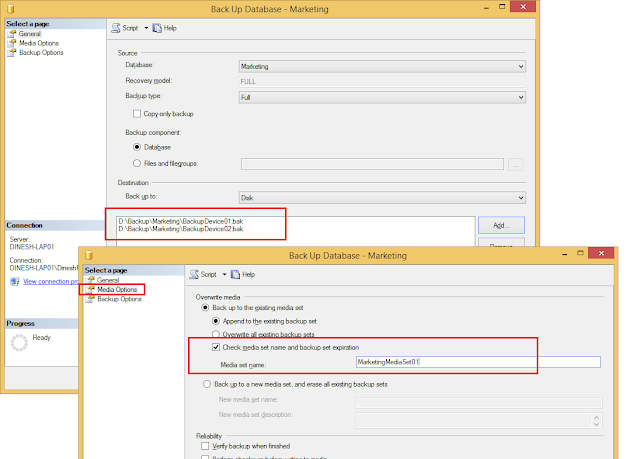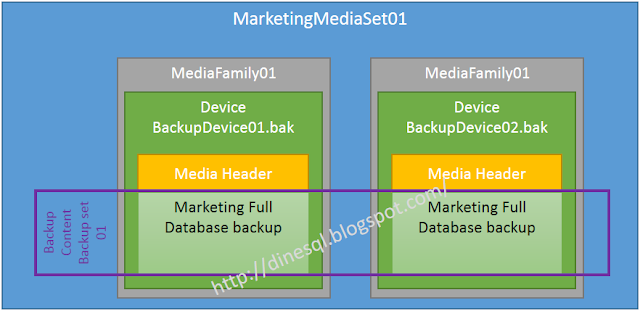First let's make a Trace using the Profiler. The following Trace is created with TSQL_Duration Template and All Columns is selected for both Events.
Note that, this creates a file named as SQLDurationTrace_YYYYMMDD_HHMMSS.
It is better to record the
TraceID generated from this because it is required to stop and close the trace if required. Since this is going start automatically, the generated
TraceID cannot be taken out as it is written. Therefore we need to change it as well. Let's create a table for holding generated trace ids. Let's create this table in
master database.
CREATE TABLE dbo.TraceID
(
ServerStartDateTime datetime NOT NULL
PRIMARY KEY DEFAULT(GetDate())
, TraceID int NULL
);
GO
Scroll down the Trace code generated and comment the
select TraceID=@TraceID statement and add the following instead.
-- display trace id for future references
--select TraceID=@TraceID
INSERT INTO dbo.TraceID
(ServerStartDateTime, TraceID)
VALUES
(DEFAULT, @TraceID);
goto finish
We have done the necessary changes to the Trace code. Let's place the entire code into a stored procedure and name it as
StartTrace. Here is the entire code now;
USE master;
GO
CREATE OR ALTER PROC dbo.StartTrace
AS
BEGIN
-- Create a Queue
declare @rc int
declare @TraceID int
declare @maxfilesize bigint
set @maxfilesize = 5
DECLARE @FilePath nvarchar(200);
SET @FilePath = N'E:\TraceOutput\SQLDurationTrace_'
+ CONVERT(nvarchar(20), GetDate(), 112) + N'_' + REPLACE(CONVERT(nvarchar(20), GetDate(), 108), ':', N'')
exec @rc = sp_trace_create @TraceID output, 0, @FilePath, @maxfilesize, NULL
if (@rc != 0) goto error
-- Client side File and Table cannot be scripted
-- Set the events
declare @on bit
set @on = 1
exec sp_trace_setevent @TraceID, 10, 1, @on
exec sp_trace_setevent @TraceID, 10, 9, @on
exec sp_trace_setevent @TraceID, 10, 2, @on
exec sp_trace_setevent @TraceID, 10, 66, @on
exec sp_trace_setevent @TraceID, 10, 10, @on
exec sp_trace_setevent @TraceID, 10, 3, @on
exec sp_trace_setevent @TraceID, 10, 4, @on
exec sp_trace_setevent @TraceID, 10, 6, @on
exec sp_trace_setevent @TraceID, 10, 7, @on
exec sp_trace_setevent @TraceID, 10, 8, @on
exec sp_trace_setevent @TraceID, 10, 11, @on
exec sp_trace_setevent @TraceID, 10, 12, @on
exec sp_trace_setevent @TraceID, 10, 13, @on
exec sp_trace_setevent @TraceID, 10, 14, @on
exec sp_trace_setevent @TraceID, 10, 15, @on
exec sp_trace_setevent @TraceID, 10, 16, @on
exec sp_trace_setevent @TraceID, 10, 17, @on
exec sp_trace_setevent @TraceID, 10, 18, @on
exec sp_trace_setevent @TraceID, 10, 25, @on
exec sp_trace_setevent @TraceID, 10, 26, @on
exec sp_trace_setevent @TraceID, 10, 31, @on
exec sp_trace_setevent @TraceID, 10, 34, @on
exec sp_trace_setevent @TraceID, 10, 35, @on
exec sp_trace_setevent @TraceID, 10, 41, @on
exec sp_trace_setevent @TraceID, 10, 48, @on
exec sp_trace_setevent @TraceID, 10, 49, @on
exec sp_trace_setevent @TraceID, 10, 50, @on
exec sp_trace_setevent @TraceID, 10, 51, @on
exec sp_trace_setevent @TraceID, 10, 60, @on
exec sp_trace_setevent @TraceID, 10, 64, @on
exec sp_trace_setevent @TraceID, 12, 1, @on
exec sp_trace_setevent @TraceID, 12, 9, @on
exec sp_trace_setevent @TraceID, 12, 3, @on
exec sp_trace_setevent @TraceID, 12, 11, @on
exec sp_trace_setevent @TraceID, 12, 4, @on
exec sp_trace_setevent @TraceID, 12, 6, @on
exec sp_trace_setevent @TraceID, 12, 7, @on
exec sp_trace_setevent @TraceID, 12, 8, @on
exec sp_trace_setevent @TraceID, 12, 10, @on
exec sp_trace_setevent @TraceID, 12, 12, @on
exec sp_trace_setevent @TraceID, 12, 13, @on
exec sp_trace_setevent @TraceID, 12, 14, @on
exec sp_trace_setevent @TraceID, 12, 15, @on
exec sp_trace_setevent @TraceID, 12, 16, @on
exec sp_trace_setevent @TraceID, 12, 17, @on
exec sp_trace_setevent @TraceID, 12, 18, @on
exec sp_trace_setevent @TraceID, 12, 26, @on
exec sp_trace_setevent @TraceID, 12, 31, @on
exec sp_trace_setevent @TraceID, 12, 35, @on
exec sp_trace_setevent @TraceID, 12, 41, @on
exec sp_trace_setevent @TraceID, 12, 48, @on
exec sp_trace_setevent @TraceID, 12, 49, @on
exec sp_trace_setevent @TraceID, 12, 50, @on
exec sp_trace_setevent @TraceID, 12, 51, @on
exec sp_trace_setevent @TraceID, 12, 60, @on
exec sp_trace_setevent @TraceID, 12, 64, @on
exec sp_trace_setevent @TraceID, 12, 66, @on
-- Set the Filters
declare @intfilter int
declare @bigintfilter bigint
exec sp_trace_setfilter @TraceID, 35, 0, 6, N'AdventureWorks2014'
-- Set the trace status to start
exec sp_trace_setstatus @TraceID, 1
-- display trace id for future references
--select TraceID=@TraceID
INSERT INTO dbo.TraceID
(ServerStartDateTime, TraceID)
VALUES
(DEFAULT, @TraceID);
goto finish
error:
select ErrorCode=@rc
finish:
END
GO
Now the last step. We need to add this stored procedure as a startup procedure. Use the following code to add
StartTrace as a Startup procedure;
USE master;
GO
EXEC sp_procoption StartTrace, 'STARTUP', 'ON';
GO
Note that, in order get this work, we need to make sure
scan for startup procs server setting is enabled. Generally, when the
sp_procoption is execute, this is getting enabled but it is always better to get it enabled before using
sp_configure. Done. Let's restart the SQL Server Service and check the
dbo.TraceID table.











































